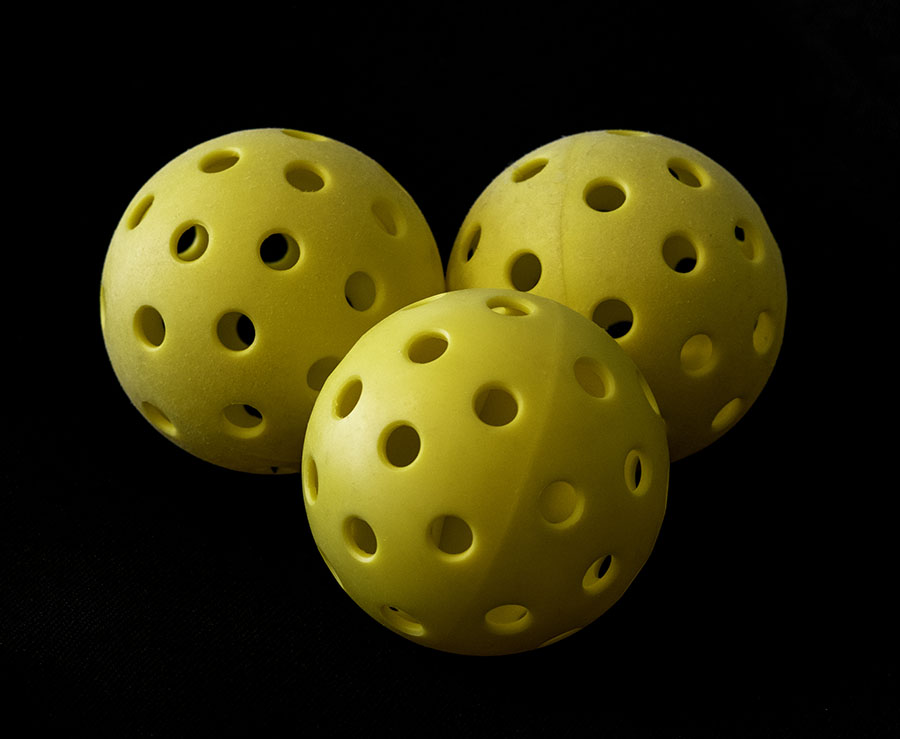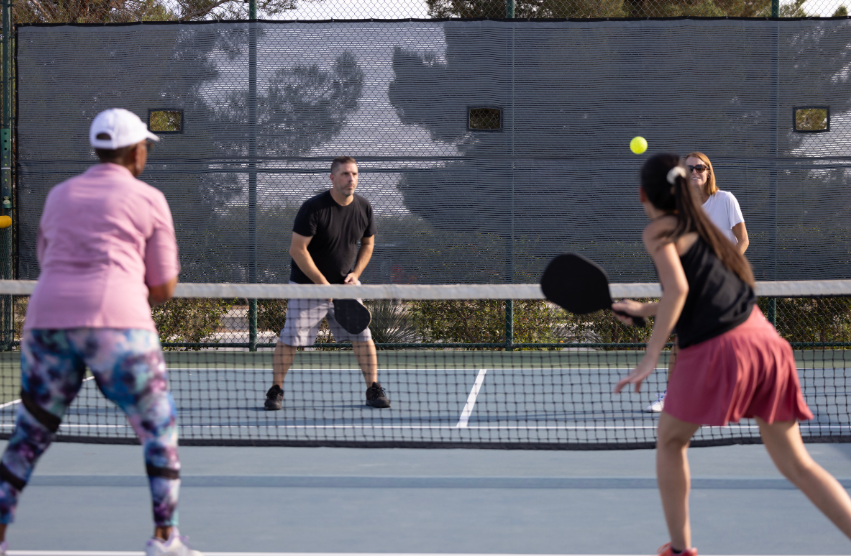The ball used in pickleball is a crucial component of the game, and its importance cannot be overstated. The ball’s design and performance can impact every aspect of the game, from the speed and trajectory of the ball to the player’s ability to control it during play.
First and foremost, the ball’s size, weight, and bounce height are critical to the game’s dynamics. The smaller court and lower net height in pickleball require a ball that is smaller, lighter, and bounces lower than a tennis ball. The smaller size of the ball allows for more precision in shot placement, while the lower bounce height makes it easier for players to control the ball and keep it in play for longer rallies.
The ball’s material and design also play a critical role in its performance. The ball must be durable enough to withstand the rigors of play while maintaining its shape and bounce characteristics. The ball’s surface must be smooth with no visible seams or joints to ensure consistent performance, and its hardness must be within a specific range to provide the right amount of bounce.
The ball’s color can also affect its visibility and playability, especially in different lighting conditions. Players may choose a particular color based on their playing environment and personal preference to improve their ability to see the ball during play.
In addition to its functional importance, the ball also has an aesthetic value that adds to the sport’s overall experience. The bright colors and distinctive design of the ball help to create a sense of excitement and energy on the court, and its unique appearance has become a recognizable symbol of the sport.
Design and Specifications
According to the official rules of pickleball, the ball must have a diameter of 2.87 inches (7.29 cm) to 2.97 inches (7.54 cm). The ball must weigh between 0.78 ounces (22.1 g) and 0.935 ounces (26.5 g). The ball is designed to be lightweight and have a lower bounce height than a tennis ball, which helps players to keep the ball in play for longer rallies.
The ball also has specific design requirements to ensure that it is durable and provides consistent performance over time. The ball must have a smooth surface with no visible seams or joints, and it must be made from a material that is resistant to wear and tear. The ball is also required to have a specific level of hardness to ensure that it bounces correctly on the court.
Materials
Pickleball balls are typically made from one of two materials: plastic or polymer. Plastic balls are typically used for recreational play, while polymer balls are preferred for competitive play. Both types of balls are designed to be lightweight and have a low bounce height, but they have different properties that can affect their performance on the court.
Plastic balls are generally less expensive and have a softer feel than polymer balls. They are also more prone to cracking or splitting, especially in colder temperatures. Polymer balls, on the other hand, are more durable and have a harder feel than plastic balls. They are also more consistent in their bounce height and trajectory, which makes them a popular choice for competitive play.
Colors
Pickleball balls are available in a range of colors, including yellow, white, and orange. The official color for competitive play is yellow, but many recreational players prefer to use brightly colored balls to make them easier to see on the court. The color of the ball can also affect its visibility in different lighting conditions, so players may choose a color that works best for their playing environment.
Manufacturers
There are several manufacturers that produce pickleball balls, each with their own unique designs and properties. Some of the most popular brands include Onix, Franklin, and DuraFast. These manufacturers use different materials and manufacturing processes to create balls with different levels of performance and durability.
Onix, for example, produces balls with a larger hole pattern, which reduces wind resistance and makes them travel faster through the air. Franklin produces balls with a lower bounce height, which makes them ideal for players who prefer a slower-paced game. DuraFast produces balls with a softer feel and greater durability, which makes them a popular choice for players who want a ball that will last for a long time.
Conclusion
The pickleball ball is a key component of the game, and it has been specifically designed to meet the unique requirements of the sport. It must be lightweight, have a low bounce height, and be durable enough to withstand the rigors of play. The ball is available in a range of colors, materials, and designs, which allows players to choose a ball that meets their specific needs and preferences. Whether playing recreationally or competitively, the pickleball ball is an essential part of the game, and its design and performance will continue to evolve as the sport grows in popularity.






